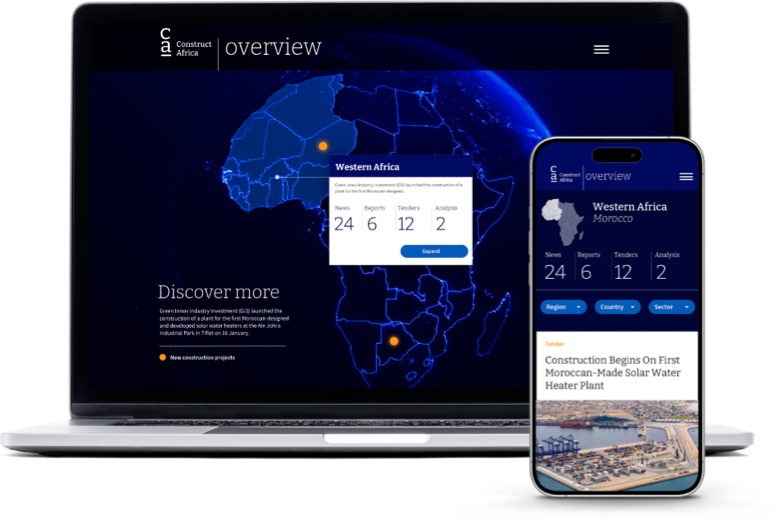Zanzibar Invites Bids To Build 18MW Solar Plant
FreeProposals solicited by 31 January for first grid-scale photovoltaic facility.
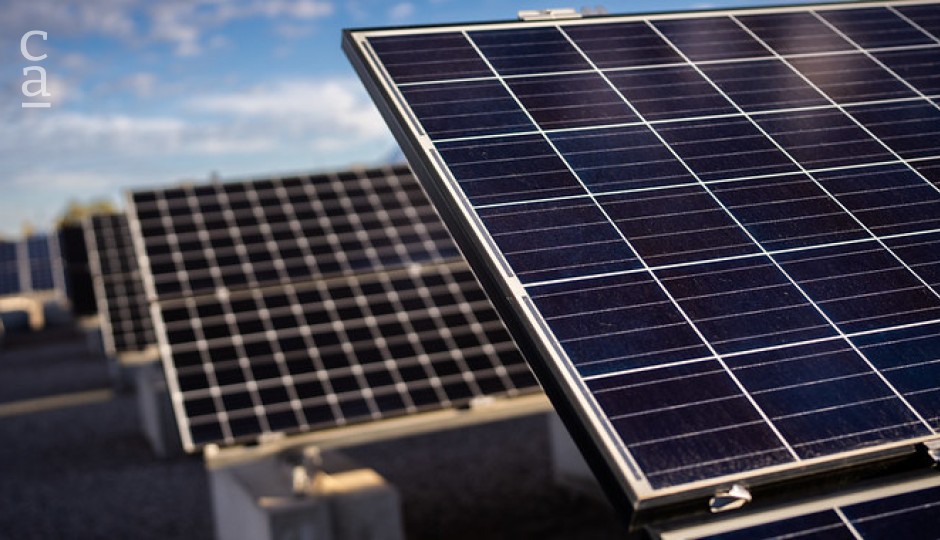
The state-owned Zanzibar Electricity Corporation (ZECO) has invited bids for the construction of an 18MW solar photovoltaic (PV) plant on Zanzibar’s Unguja island.
The deadline for proposals is 31 January and the scope of work involves the design, supply, installation, testing and commissioning of the facility over the course of 12 months followed by an operations and maintenance period of three years. The contract has an estimated cost of US$15 million.
The plant will be the archipelago’s first grid-scale PV plant and will be located across 41.4 hectares in the Makunduchi area. It is expected to be operated for a minimum of 30 years. The project will include associated works such as building a short interconnection line linking the plant to the grid.
The request for bids was published on 16 December and can be viewed here.
The PV facility is part of the US$142 million Zanzibar Energy Sector Transformation and Access (ZESTA) Project, which is being supported by the World Bank. The scheme aims to expand access to reliable and efficient electricity services and to scale up renewable energy generation in Zanzibar. An estimated 378,000 people are planned to benefit from the scheme.
Other ZESTA project components include a lithium-ion 20MWh battery energy storage system (BESS), which is to be located across 1.3 hectares in the Mtoni (Galagala) area of Unguja island. The system is expected to enable the optimal utilisation of the PV plant as well as reduce the use of diesel-based generators to serve peak demand. The contract has yet to be awarded and has an estimated value of US$22 million.
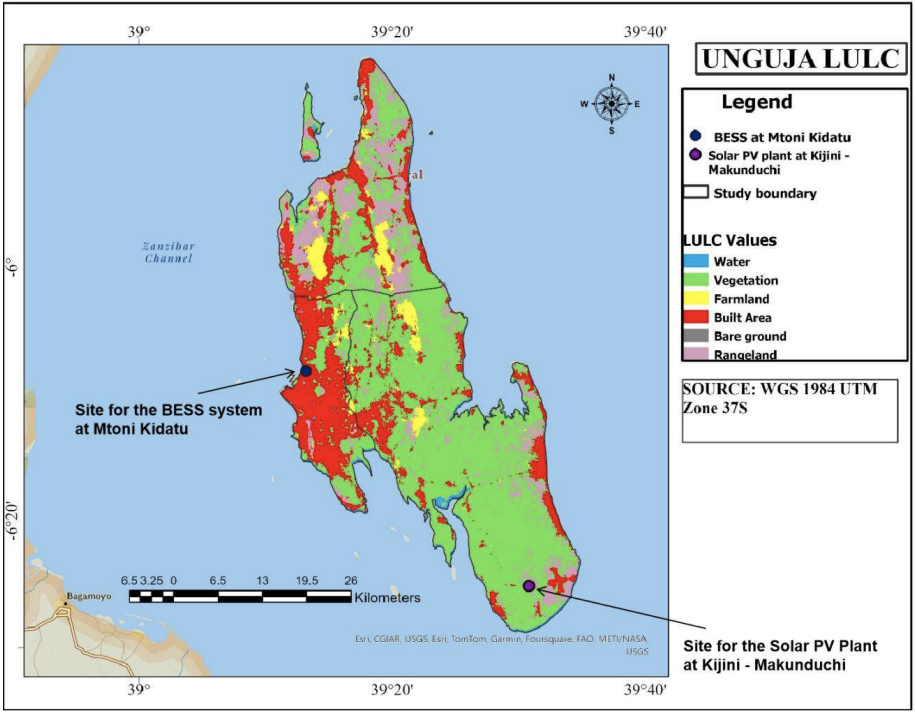
Source: Project EIA report, August 2024
In addition, the scheme covers the construction of Zanzibar’s first 132kV high-voltage transmission backbone infrastructure spanning about 94km across all three regions of Unguja island. The double-circuit line will run from Welezo through Ubago to Makunduchi and Matemwe, and will evacuate power from the proposed PV plant and BESS as well as enable future integration of renewable energy.
In July 2024, a consortium of China’s ZTT Group and South Korea’s Jongro Electric Company were awarded a US$19.4 million 24-month deal to construct the line.
Along with this, a 132kV switching substation will be built at Welezo and two 132kV substations at Matemwe and Makunduchi on the island. In July 2024, China’s Sieyuan Electric Company won a US$27.5 million 24-month contract to execute the work.

Source: Project ESIA report, September 2022
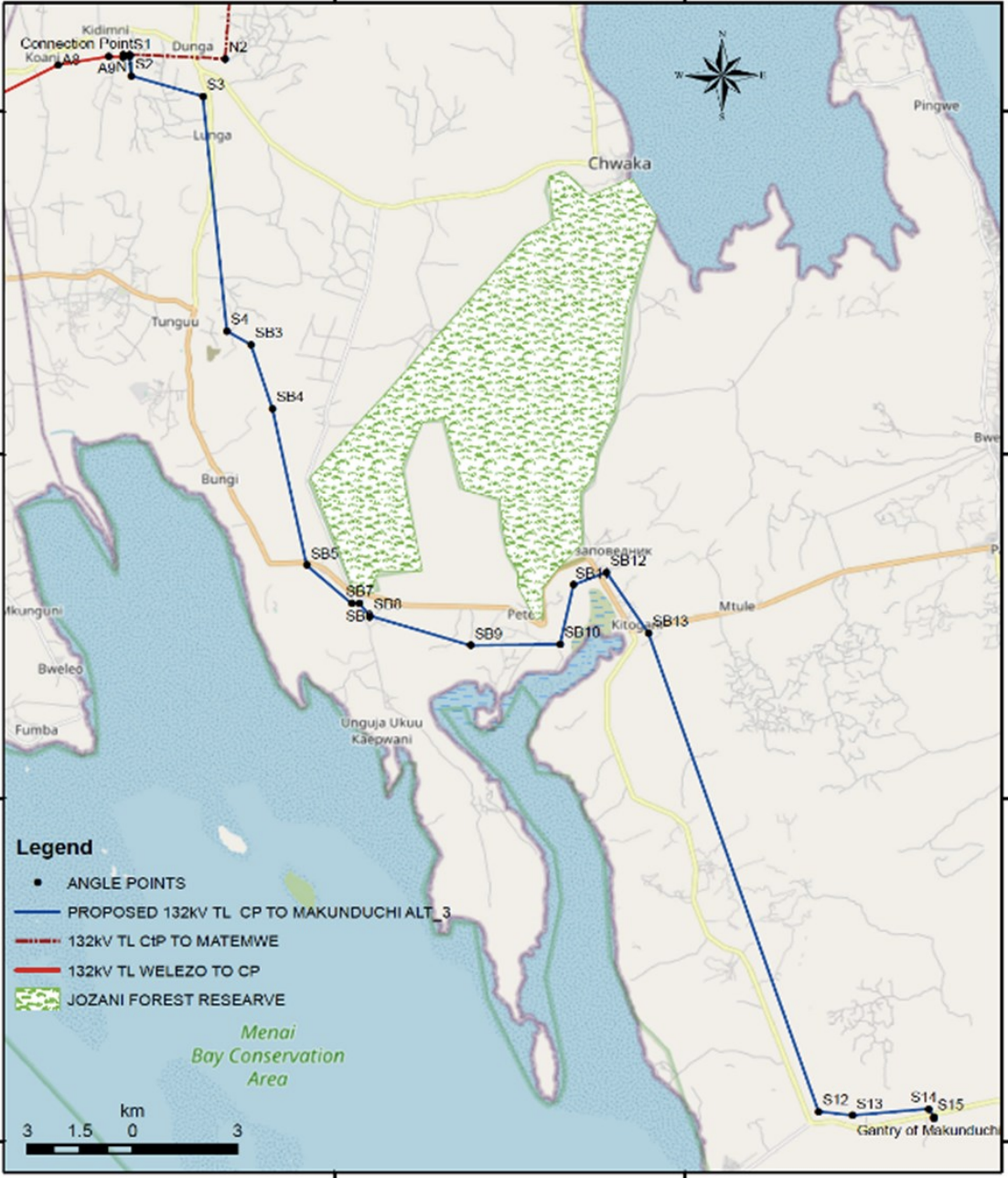
Source: Project ESIA report, September 2022
Additionally, the project covers the design, supply, and installation of a supervision, control and data acquisition (SCADA) system and an energy management system (EMS). In late October 2024, ZECO invited bids for the work by late November that year. The expected contract duration is 30 months, including a 12-month defect liability period.
ZECO and the Ministry of Water, Energy and Minerals (MoWEM) are the main implementers of the ZESTA project. The scheme was approved by the World Bank in June 2021 and is envisaged to be completed by August 2027.
The ZESTA project is aimed at addressing key challenges in Zanzibar’s power sector caused by sole reliance on the limited transmission capacity from the Tanzanian mainland. Unguja island, which hosts more than 70% of the archipelago’s population, imports its power from Dar Es Salaam through the Tanzania Electricity Supply Company (Tanesco) via a 132kV submarine cable with a maximum capacity of 100MW that was commissioned in 2013.
According to projections, failure to augment this supply is expected to result in supply rationing and load shedding during the peak demand period on the island, with consumption recording an average growth of about 8% a year between 2014 and 2019.
Zanzibar’s electricity industry also struggles with an inadequate distribution system, which leads to high technical losses and prevents reliable and efficient supply and the acceleration of electricity access scale-up.
To further shore up the archipelago's power supply, ZECO and Tanesco are looking to construct a 220kV transmission line from Dar Es Salaam to Unguja island, with a total length of 49.7km.
The link includes 9.7km of underground cable and 40km of submarine cable running from the Ununio substation at Ras Kilomoni in Dar Es Salaam to Mtende on Unguja island and extended through underground cabling to the Makunduchi substation.
In addition, a 132kV underground cable is planned to be built from the Majani Mapana substation in Tanga city in Tanzania, running parallel to the existing 33kV line toward Zanzibar’s Pemba island.
The transmission line will consist of a 70km submarine cable from Miyanjani in Tanga to Mkumbuu on Pemba island along with an underground cable laid along 9km from Mkumbuu to the Wesha substation. The project will also see the rehabilitation and upgrade of the substation from 33kV to 132kV.
A consultant team of Italy’s Cesi and ELC Electroconsult and Nigeria’s Colenco Consulting is undertaking the technical feasibility studies for the projects, along with the conceptual design, preparation of tendering documents and environmental and social impact assessments (ESIA). The African Development Bank (AfDB) is financing the studies.
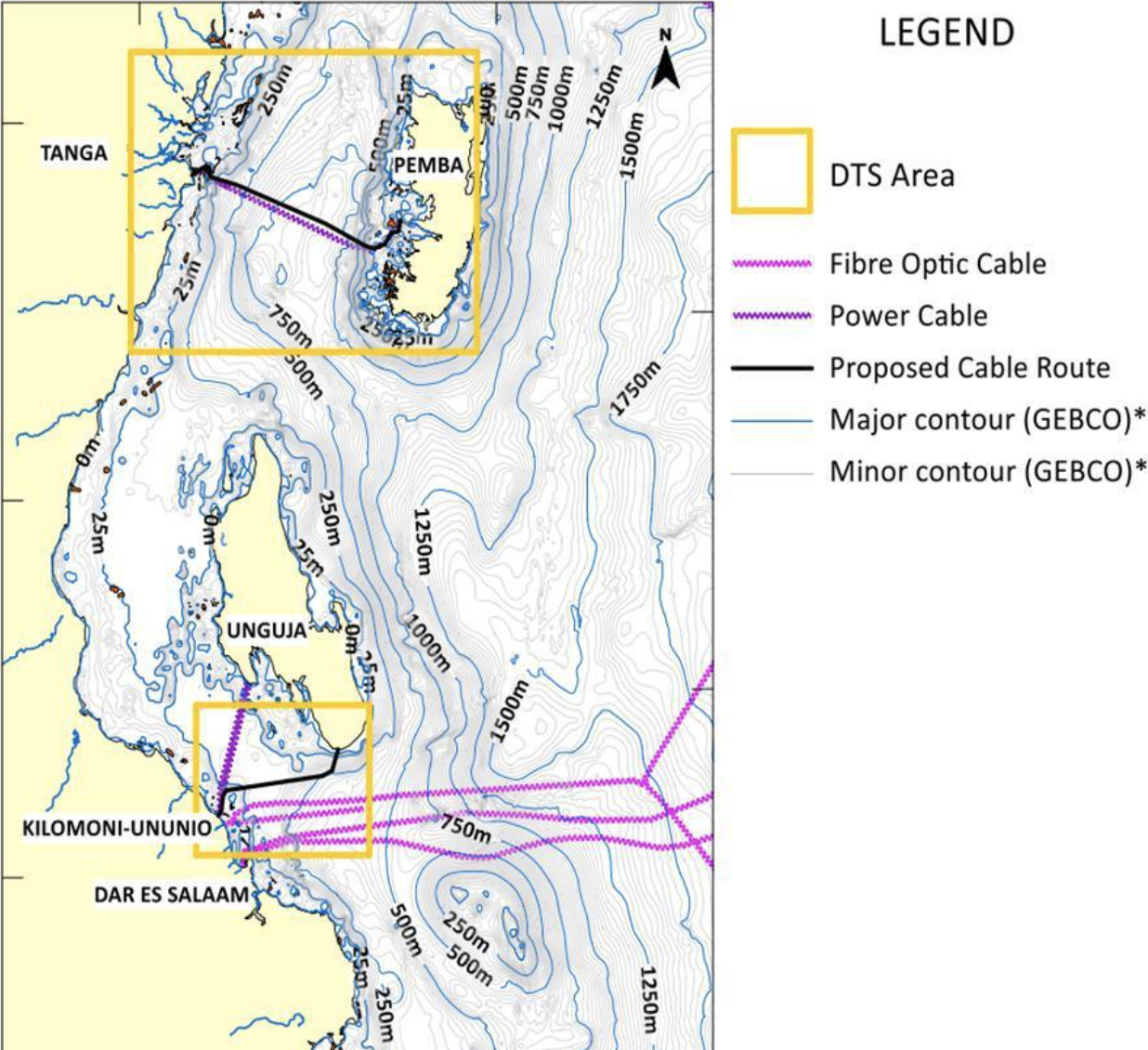
Source: Project ESIA report, November 2024
Top photo: Solar panels (© Craig Fritz | Flickr)
Discover
myConstructAfrica
Your one-stop-shop for information and actionable intelligence on the construction and infrastructure pipeline in African countries
- News, analysis and commentary to keep up-to-date with the construction landscape in Africa.
- Industry Reports providing strategic competitive intelligence on construction markets in African countries for analysts and decision-makers.
- Pipeline Platform tracking construction and infrastructure project opportunities across Africa from conception to completion.
- Access to contact details of developers, contractors, and consultants on construction projects in Africa.
- News and analysis on construction in Africa.
- Industry Reports on construction markets in African countries.
- Pipeline platform tracking construction and infrastructure projects in Africa.
- Access to contact details on construction projects in Africa.
